INVEST IN SEMEN STRAWS WISELY AND THOUGHTFULLY
Sponsored by udfom

PREPARING YOUR BUCKS FOR THE HUNT

COMMON SENSE ADVICE
Sponsored by wol

RAISING AND KEEPING EXOTICS

KANSAS FARMERS OFFER INSIGHT

Sponsored by keda











INVEST IN SEMEN STRAWS WISELY AND THOUGHTFULLY
Sponsored by udfom

PREPARING YOUR BUCKS FOR THE HUNT

COMMON SENSE ADVICE
Sponsored by wol

RAISING AND KEEPING EXOTICS

KANSAS FARMERS OFFER INSIGHT

Sponsored by keda










Amy Nold (‘26) President Nold Farms LLC 51 SW 1501 RD



Urich, MO Henry 64788 660-492-0215 noldfarmsllc@yahoo.com


Bradley Lueckenhoff (‘26) Vice President Little Flat Creek 200 Washington St Suite 4 Purdy, MO 65734



417-342-2516
bradjlueck@gmail.com
Matt Kirchner (‘25) Missouri Whitetails
29158 Hwy. C Alexandria, MO 63430 660-341-0554
mkirchner32@gmail.com
Sean Combs (‘24)
Tall Tine Whitetail Ranch
697 Blackjack Trail Mountain Home, AR 72653
870-450-2736
sean@mallardresort.com
Donald Hill (‘24)
Oak Creek Whitetail Ranch 178 Oak Creek Ln Bland, MO 65014
573-943-6644
donald@oakcreekwhitetailranch.com
Racheal Monnig (‘24) Secretary / Treasurer

Monnig Whitetails
14631 Cedar Ridge Ave Salisbury, MO 65281 660-413-1254
monnig.whitetails@yahoo.com
Amanda Peckinpaugh

Accounting
MDA Accounting Department PO Box 1141, Marion IL 62959 618-993-3618
fax: 855-222-6027
accounting@missourideerassociation.com
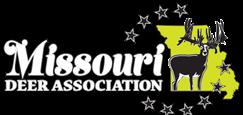
Bradley Puff (‘26) High Adventure Ranch 308 Mikel Ave St. Louis, MO 63043 314-578-4590
bpuff@highadventureranch.com
Garrett Westfall (‘24) Double G Ranch Whitetails 12602 Summersette Liberty, MO 64068 816-806-9905
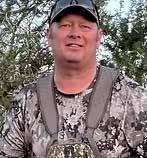
doublegwestfall@gmail.com
Jeni Haddock (‘25) Walleye Whitetails
7751 Walleye Rd Pierce City, MO usa 65723 417-316-1059
jeni.haddock@gmail.com

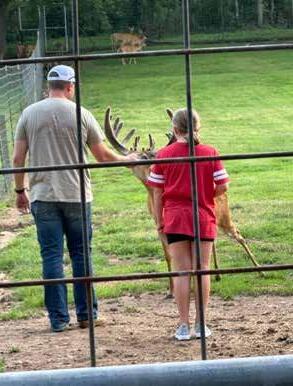
We may be a small group, but stand strong and continue to persevere, as regulations continue to APPLY PRESSURE on our way of life. Our industry continues rise and fight for the right to continue to care for gods amazing creatures. We continue to have regulatory meetings with Missouri Dept. of Ag and Missouri Department of Conservation, to follow and create regulation changes, we hope to continue this amicable relationship to manage regulations.
The second weekend in August, the Missouri Deer Association has held its annual meeting for many years. This year was no different, we had almost all our membership present. A Board of Directors meeting was held. We welcome a new board member, Bradley Lueckenhoff of Little Flat Creek Ranch. Board of Directors are as followed, Amy GreenNold, President, Bradley Lueckenhoff, Vice-President, Rachael Monnig, Secretary/Treasurer, Matt Kirchner, Donald Hill, Brad Puff, Garrett Westfall, Jeni Haddock and Sean Combs.
I would like to personally extend thanks a gratitude to Jerry Campbell for his many years of service to Missouri Deer Association.
We would like to thank this year’s host Little Flat Creek Ranch. Little Flat Creek Ranch was founded in 1991, as a family hunting operation. Throughout the years it has grown to a world-class hunting facility. In 2004, the ranch partnered with the Catch-A-Dream Foundation and began providing hunting and fishing adventures for children battling life threatening illnesses. In 2015, all commercial operations ended, and the Ranch’s priority was given to Catch-A-Dream. In 2018, the LFCR Dream Foundation, a 501(C)(3) non-profit organization, was created, and a new partnership with Charlie 22 Outdoors began. Charlie 22 Outdoors provides outdoor adventures for our Nation’s Veterans, and their families. Currently, Little Flat Creek Ranch and the LFCR Dream Foundation provide nearly one-third of all Catch-A-Dream trips, and just recently, we wrapped up our 233rd trip with Catch-A-Dream. Since partnering in 2018, we have also provided nearly 60 trips for Charlie 22 Outdoors. All these trips are 100% free of charge to these organizations and their guests.
We would like to thank IDEFA for their generous donation to the Missouri Deer Association, this will help us with our efforts to continue our work with regulatory changes.
Amy Green-Nold- (660) 492-0215

Missouri Deer Association- President


Holding a homemade plywood shield in one hand and several peanuts in the other, red deer farmer Kevin Constant walks out to his deer pens in the spring to tag newborn red deer calves. A fiercely protective hind (female) stands ready in an instant to defend her baby. Constant, who is also ready to defend himself, tosses peanuts on the ground and then with hyper-focused precision, gets the job done as quickly as possible. While red deer may be heartier and perhaps easier to raise then whitetails, they can also be very aggressive when it comes to protecting their young.
Raising red deer is akin to raising “big cows with big antlers,” said Constant, who, along with his wife Delores, own K & D Wildlife in Meriden, Kansas. “Red deer are very disease resistant and not as flighty as whitetails and are more adaptable to situations. They are more curious than cautious by nature. If you have a pair of gloves in your back pocket, they’ll try to steal them. If they grab them and take off and you chase them, it’s like ‘game on!” he said. “They’ll even climb into your vehicle if you let them.” Started in 2019, Constant, 61, was looking to raise livestock on their 80-acre sprawl. When a local farmer decided to part with his red deer herd,
the Constants purchased it and have been raising red deer ever since. While they appreciate their hardiness, they are also grateful for the low mortality rate the farm has experienced in keeping them. “We only lose about 10% of our babies a year,” he said. “We lost one from sickness that died four years ago, and we might lose one or two a year from new inexperienced mothers or if one comes out backwards.”
safety measures, fallow deer do really well and adapt to a wide variety of climates,” Farmer added.





Exotic wildlife in general enjoy a more stress-free existence as collectively they are known for their hardiness and inquisitive, laid-back nature. However, curiosity can also prove deadly, as Brad Farmer of Farmer’s Fallow Deer in Viola, Kansas accidentally found out. While he has successfully and diligently raised fallow deer since 1990, he learned early on how much they like to chew on things. “I would caution people to take off the plastic twine and net wrap around hay bales,” Farmer, 63, said. “If ingested, it forms a calcified mass or “rim” around their rumen and fills it up, causing them to starve to death. But, you don’t know it until they are dead.” Shade cloth is another item that exotic deer farmers may want to avoid using as it often gets caught around antlers of curious bucks. “As long as you practice
Credited for bringing fallow deer to the United States is NADeFA Founder Josef Kerckerinck, who started Lucky Star Ranch in 1979 in Chaumont, New York after immigrating from Germany. Upon establishing his farm, he became steadfast in his desire to promote the venison market, his main motivation for establishing NADeFA. Soon, fallow deer became viable livestock on numerous farms throughout the U.S. and highly sought-after for their meat value. Fallow deer, the most popular exotic species to raise, are either of Mesopotamian descent (larger bodied with wide-base antlers) or European descent (smaller bodied and narrow-base antlers.)
Profit margins for selling exotics such as red deer and fallow can be very reasonable, as both Constant and Farmer feel the market value for their deer makes their efforts worthwhile. While both feed their herds hay, grain and silage (green fodder stored in a silo and fed throughout the winter), they also do quite well with naturally foraging. Raising exotics also requires farmers to obtain a state license. As with Farmer, Constant feels blessed to be able to raise exotics. For this opportunity “thanks be to God,” Constant said. “We believe in the promise of blessings and have seen it over and over in the success of our herd.”




PEACEMAKER™

TO HELP
Now enhanced with appetite stimulants and probiotics for digestive health
Contains no herbals nor tryptophan, eliminating concerns of unwanted side effects
DESIGNED SAVE 5% ON PEACEMAKER THROUGH PBS ANIMAL HEALTH DURING SEPT- NOV 2023 NEW 30 LB. RESEALABLE BAG!


YOUR






Use PeaceMaker™ to help “keep the peace” during pre-rut, rut, transportation and other key times during the year










Now available in a 30 lb resealable bag and 11.25 lb pail to help fit your operation’s needs

ROBUST, FAST GI SUPPORT FOR FAWNS & OLDER DEER




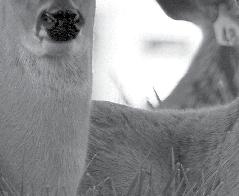
Designed to quickly support normal GI health


Novel formula delivers powerful immune support







DIGESTIVE HEALTH & IMMUNE SUPPORT CERVIDS OF ALL AGES

Supports digestive health and a healthy immune system
Natural formula contains Encrypt®, egg proteins, enzymes, micro-encapsulated probiotics and a prebiotic

Top dress or mix in feed during fawning season, weather changes, times of stress and when top performance is desired

Chris Ezell President

Dangerous Whitetails of Oklahoma
7134 W. 420 Rd
Chelsea, OK 74016 918-697-5389

chrisezell@rocketmail.com
Tommy Gleason Vice President Deer Creek Whitetails 571 Lone Oak Rd W


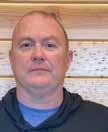
Hartshorne, OK 74547 918-424-5293
tomgleason6@yahoo.com
Mike Charlton
Riverbend Trophy Whitetails
3616 Boston Pool Rd. Hominy, OK 74035
Mkbs5484@icloud.com 918-430-5484
Tim Condict
Double T Whitetail Ranch
23455 FR A51
Hodgen, OK 75069
214-549-9963
tim@dbcdeer.com
Shawn Horton
368145 E 980 Rd
Boley, Ok 74829 214-842-9462
shorton1965@yahoo.com
Larry Armstrong Treasurer
Armstrong Whitetails 689 Whitetail Ridge Skiatook, OK 74070 918-639-6951
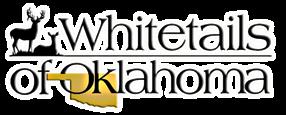
critter6634@gmail.com.
Meagan E. Lewis Secretary
Antlers Trophy Whitetails 1899 E CR 1980 ANTLERS, OK 74523 979-864-7732
mjlewis2020@icloud.com
Barry Reed 836 E 480 Pryor, OK 74361 918-798-1887

barryreed7@aol.com

Joe Smith 14421 Buggy I Jones, OK 73049 405-696-3880



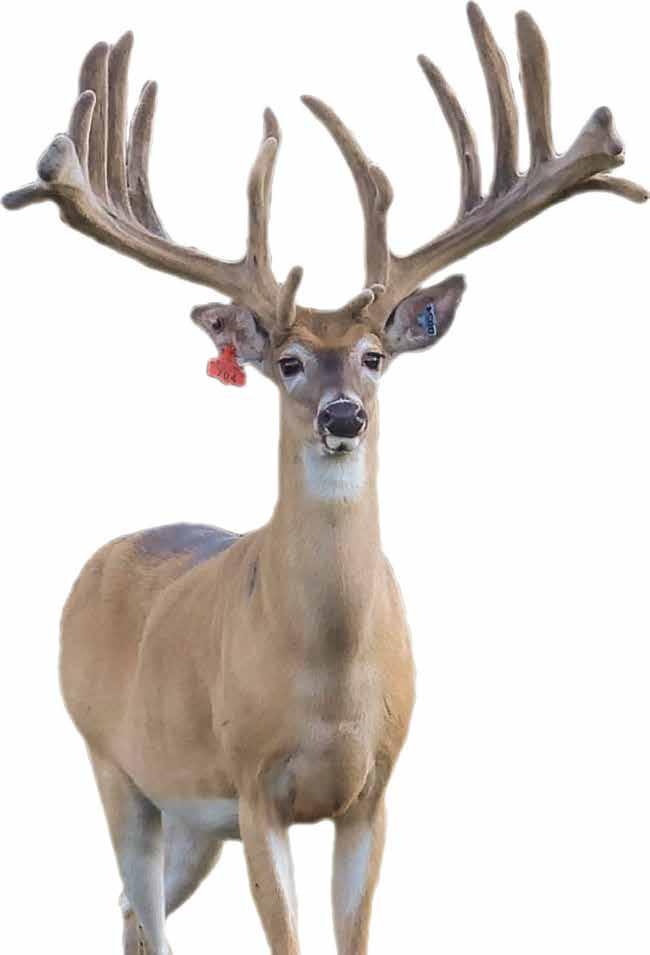


Karla Kretschmer President

AB Whitetails 2052 Nation Rd

Chetopa, KS 67336 620-920-0578
karlakretschmer@outlook.com
Kevin Constant Secretary / Treasurer


K&D Wildlife 4193 Clark rd. Meriden, KS 66512 785-224-8889
kanddwildlife@gmail.com
Joe Bisogno, Jr. Vice President
Timber Hills Lake Ranch 1369 Valley Road Mapleton, Kansas 66754 913-515-1507
joebisogno@yahoo.com
Jake Lamb Director-At-Large

Sand Creek Whitetail 10865 School Creek Rd Saint George, Kansas 66535 785-458-9100

sandcreekwhitetail@gmail.com
Mike Harris
Director-At-Large
Acorns Wild 2369 Wolf Rd Chapman, Kansas 67431

acornsresort@yahoo.com
KEDA members and DEER family, Fall is rapidly approaching. Can’t come soon enough for some of us. Summer and the heat have left farms begging for a frost. Prayers are with those who have lost a lot of cervids this year.
KEDA Summer Picnic was great. Thank you to Acorns Wild for hosting and the Kansas Department of Ag for coming. I hope everyone left with more knowledge and more “Deer Friends.
Kansas will host their own Conference in 2024. The date is Saturday, February 17th. Please mark your calendars. The venue will be Acorns Resort at Milford Lake. More information will be in Winter magazine and will be posted on our website and Facebook soon.
KEDA’s purpose is to encourage our industry growth. Compromise and adaptation are vital for our industry’s growth. Working together with leadership on the State and Federal level is crucial for us to succeed.
Hope to see you In February 2024
Sincerely,
Karla Kretschmer President Kansas Elk and Deer Association
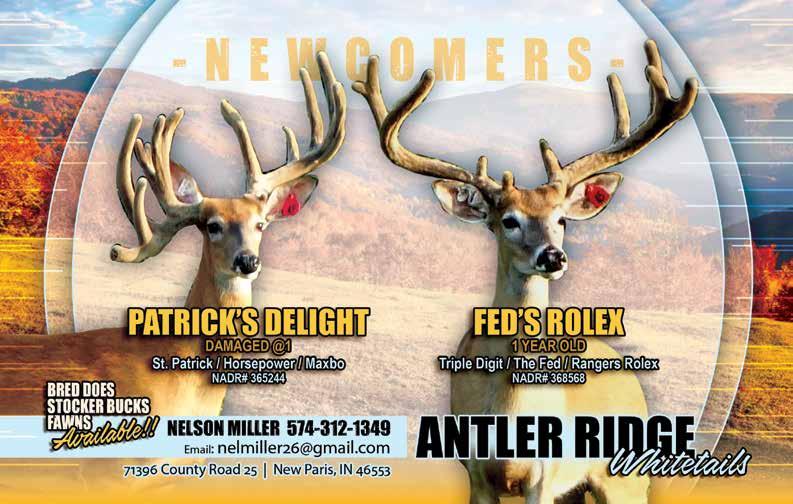







Any deer farmer who’s bought semen straws for the last five to six years more-than-likely “has too much semen,” explains Alex Draper of DD Deer Farms in Clio, Michigan. Although semen straws allow a deer farmer to breed with perhaps the best buck on the market, that same buck may be replaced by another the following year with even better and more desirable traits, making semen straws of the previous year’s buck obsolete. “If you bought more semen from a buck than you can use in one breeding season, you may have wasted your money,” Draper advised.
Individual semen straws, which can vary greatly in price depending on the buck, typically cover two to three does through vaginal A.I. or one to two does through the use of an insemination gun. And while diversifying genetics can be the focus of a deer farmer each breeding season, Draper, 71, a deer farmer of 32-plus years, cautions to study conception rates and to consider your budget and goals beforehand. Should your budget allow for five semen straws, buy five of the same buck you desire to breed to, rather than one straw from five different bucks. “If you only buy one straw from one buck, and you only end up with one surviving fawn from that straw that dies later in the fall, you’ve lost the genetic potential of that entire straw,” he said. “Buy enough to make a difference. It’s better to make sure you end up with the offspring you were after. When you are buying semen, you also need a good grasp on genetics and should breed for paper (pedigrees) or better genetics going forward.”
However, even though keeping up with industry trends has it’s advantages, Draper, whose focus in the past few years has been on raising typicals, is

now charting a different course for his farm. This fall and in subsequent years to come, he will be focusing on genetic breeding values (GBV’s) which estimate an animal’s genetic merit for a particular trait and while defining the superiority or inferiority of it’s offspring. In the case of whitetail deer, Draper along with other deer farmers, are realizing the increased need to breed for CWD resistance. To this end, Draper may use some of the semen straws from his old inventory to help perpetuate this goal. “Be aware that some big bucks on the scene now have no GBV’s,” he said. To date, as a result of making informed choices about the purchase of semen straws, more than half of the breeder bucks on Draper’s farm possess the “SS” allele or better. Through his studies, Draper has found he likes “K’s” and “H’s” and anything equal to the “SS” allele but without a “G” link to it. Alleles, defined as one or two alternative forms of a gene that arise by mutation and are found at the same place on a chromosome, may strongly determine a whitetail’s potential resistance to CWD.
“Don’t get me wrong, I like my typicals, but most of the stuff that has favorable GBV’s has a more nontypical look,” explained Draper, whose background and professional engineering career centering around science is influencing him to move away from typicals, and later go back to them when genetics are more favorable and able to sustain many generations of CWD resistant deer. “Here in Michigan, we look it at as a long-term goal and can start with the base that we are creating,” he said. “The science side of me is making me want to focus on the breeding markers and leave a good foundation (legacy) for others to benefit from. It’s not about chasing pedigrees but about the markers. Michigan has a good stocker buck market to move us a couple years down the road. Our ultimate goal is to develop our breeding operations to have all great markers and develop the GBV’s that protect against CWD for future sales of those protected deer.”
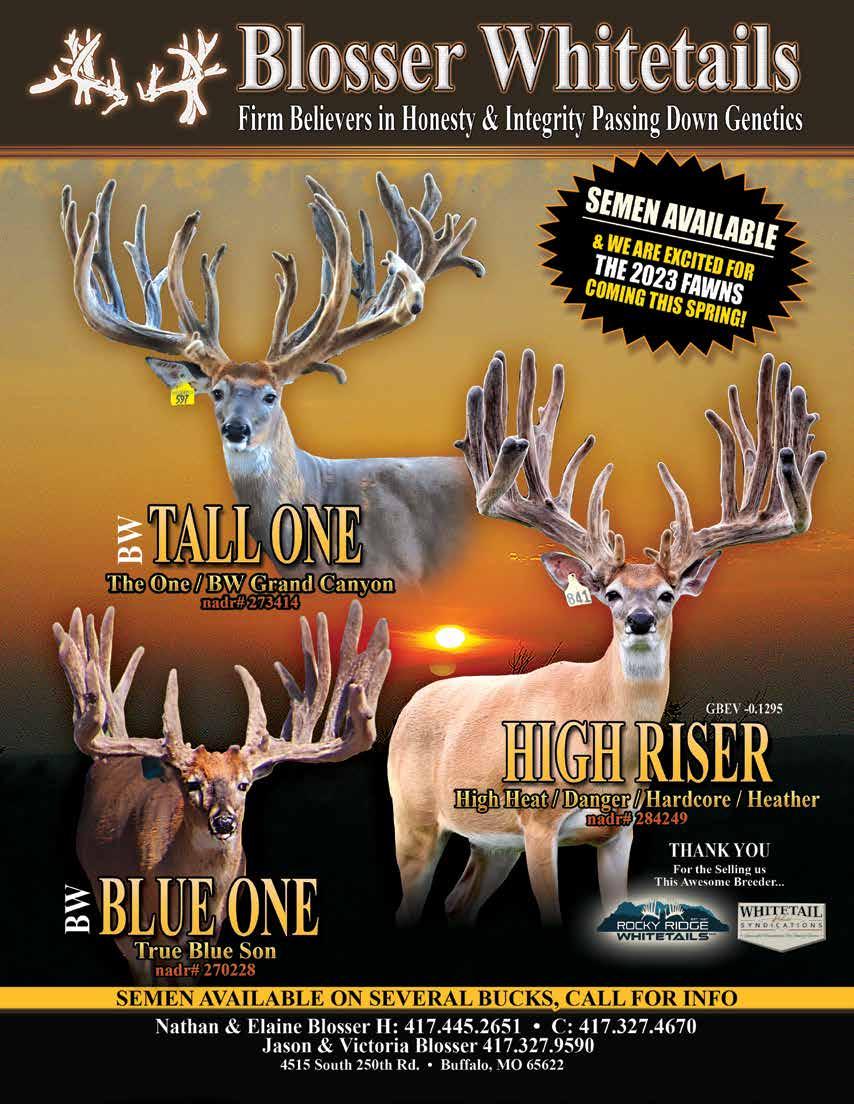








If you would like your farm or business featured on our business card pages, email digital pdf file or scanned image (must be readable resolution) of your business card to:
Meagan Lewis for Oklahoma members: mjlewis2020@icloud.com
Karla Kretschmer for Kansas and Missouri members: karlakretschmer@outlook.com
This gives Tri-State members a way to reach out to one another for services and to buy or sell deer! There will be limited pages for these card spreads, first come first serve. The overflow would be placed in the next issue and cards will be rotated each quarter.


If you have any questions please contact Kathy Giesen: 435-817-0150
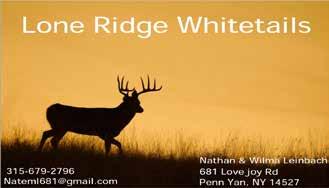
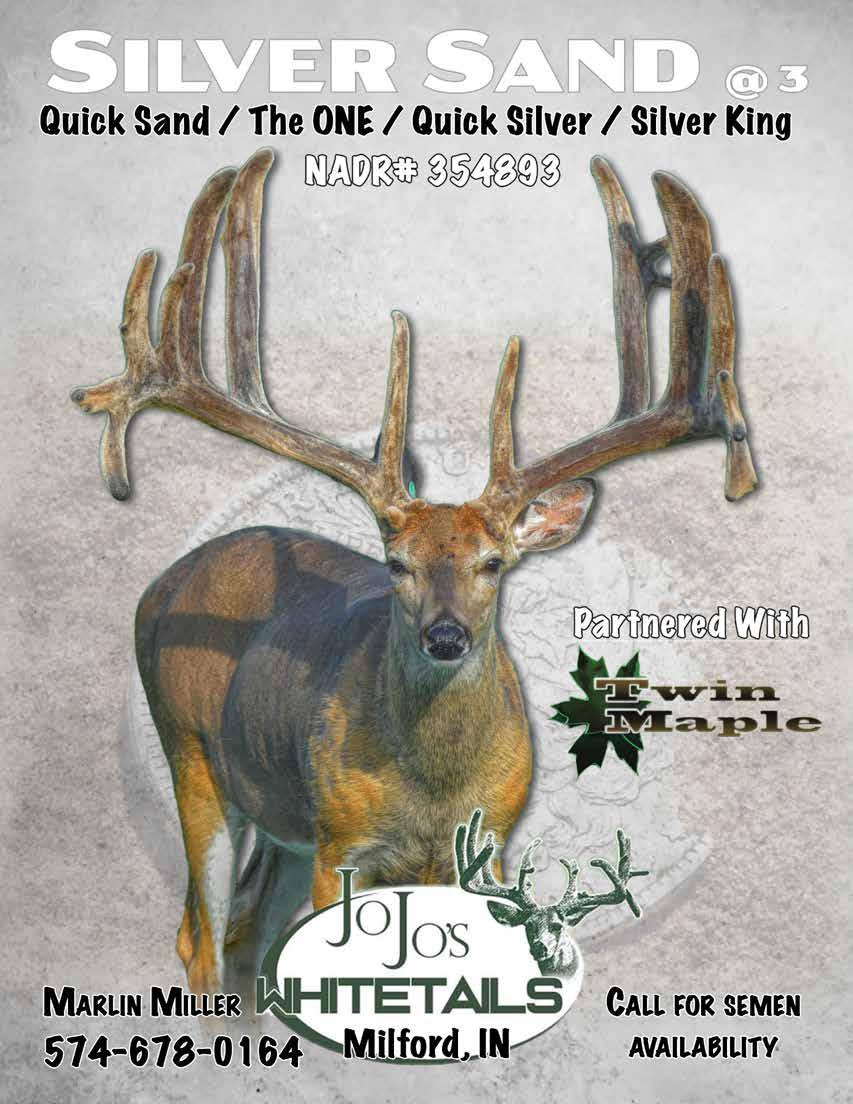









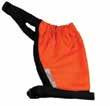




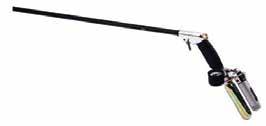






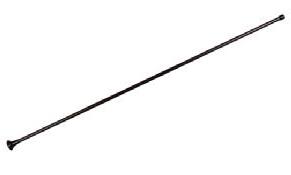
Accurate wildlife counts are critical to any operation. Lafourche Drone Services provides accurate, reliable, and affordable surveying and tracking for any type of land.


Instead of surveying from the ground we utilize drones equipped with state-of-the-art thermal sensor capability that allows us to accurately track the movement of wildlife with up to 96% precision.
Because we survey from above we never disturb the wildlife in their natural environment or disturb your land.
985-200-4280

No matter how large your land is or how many animals you may have, tracking wildlife is tough.
Our location reports provide a visual interpretation of what’s happening on the ground.
Have you ever had a burger so good that you couldn’t set it down? Yeah? This is one of those burgers. The secrets to a perfect venison mushroom swiss burger are a little bit of time and a whole lotta cheese. Perfectly caramelized mushrooms and onions are an exercise in patience but once you have them paired with a deliciously cheesy, juicy venison burger, you’ll want to make them over and over
Caramelized Mushrooms and Onions:
• 1 lb cremini mushrooms, sliced
• 4 cups onions, julienned (cut from root to tip)
• 2 tablespoon butter
• salt and pepper, to taste
Burger Patties:
• 1 lb ground venison (or elk, moose, antelope, beef, etc.)
• 2 tablespoon worcestershire sauce
• 1 tablespoon olive oil

• 1 teaspoon garlic powder
• 1 teaspoon onion powder
• ¼ teaspoon salt
• ¼ teaspoon black pepper
• 4 slices Swiss cheese, cut into ¼” squares
Other Ingredients:
• 4 slices Swiss cheese
• 4 brioche hamburger buns
• mayo (optional)
• ketchup (optional)
1. Carmelize Mushrooms and onions in a large pan over medium-low heat. The timing varies on the freshness of your ingredients but should take about 7-10 minutes.
2. Preheat grill to 350°F.
3. In a medium bowl, add ground meat, worcestershire sauce, olive oil, garlic powder, onion powder, salt, and pepper.
4. Mix with your hands until spices are well-combined with the meat. Add in diced pieces of Swiss cheese and gently incorporate them into the meat.
5. Divide meat into 4 equal portions. Roll each piece of meat into a ball, then form into a patty by squishing it between the palms of your hands. Patties should be about 4.5-5” in diameter. Using your thumb, place a small dimple in the middle of each patty.
6. Carefully place burger patties on grill and cook for 4-5 minutes.
7. Flip and cook an additional 3-4 minutes. Remove to a foil-lined flat grill pan or small sheet pan.
8. Top burgers with mushrooms and onions, then top with cheese. You can save some of the mushrooms and onions out to place on top of the melted cheese too, if desired.

9. Place pan back on grill and cook for 4-5 minutes, using indirect heat (not directly over the flame).
10. Remove pan from grill when cheese is melted.
11. Spread mayo on buns if desired, then add burgers to the bottom bun. Drizzle with ketchup if desired and place top half of bun on top. Enjoy!
The rules for sudoku are simple.

A 9x9 square must be filled in with numbers from 1-9 with no repeated numbers in each line, horizontally or vertically.
To challenge you more, there are 3x3 squares marked out in the grid, and each of these squares can’t have any repeat numbers either.

Send in this picture with your childs name and age for a chance to be featured in the next magazine or on our facebook page!
All ages welcome to participate!
Pictures can be emailed to deerassociations@gmail.com or mailed to Samantha Uchytil
19291 59th St NE New London, MN 56273
Be Creative and add in a background for Bunny!











 By: Gail Veley • Sponsored by WOL
By: Gail Veley • Sponsored by WOL
Preparing your bucks for the hunt begins long before warm and humid summer months turn into cooler and crisper fall days. Although the feeling of autumn ascending upon the earth makes hunters usually think of only one thing – hunting – preserve owners have begun preparing for those hunts months before. In fact, it may feel as though they are always perpetually preparing in one form or another. However, February can be a crucial month in this overall process. “After the hardest part of the winter is over, I start in February making sure I have enough protein available to my bucks in my preserve who were not harvested the year before,” said Brandon Bollinger of 2 Brothers Whitetail in Loranger, Louisiana. “Protein gets them from the rut back into condition. The key is their body condition.”
An essential source of protein can be found in clover plots. “You want to make sure those are ready for spring,” Bollinger, 47, said. “The key to growing big deer is putting a buffet in front on them and as little amount of stress as possible.” Bollinger, who makes a point of closely watching and surveying his bucks all summer, starts rolling his preserve cameras in July, in an effort to
ensure those bucks, currently residing inside, are ingesting enough adequate protein to meet size standards for the upcoming season. Bucks currently residing in pens are also closely monitored as plans progress to stock the preserve. And although Bollinger raises enough of his own bucks to not need to buy more, he feels that selling some of his own while acquiring some from other farms, keeps his inventory varied and perhaps more appealing to hunters.
Bollinger, in addition to knowing how to raise the most appealing buck, has also learned through the years the most appealing circumstances of introducing bucks into a preserve. “I start in August while they are still in velvet,” he said. “Don’t do it the day before a hunt. Put them in the preserve in August while they are in velvet and learning where they want to be, and they are calm. You also need a 30-day buffer to make sure the medications they need for transport are out of their system.” Preceding these precautions is the most valuable advice: Introduce them into the preserve at night. “You have much less of a chance of losing them because it’s not as hot.” Although some preserve owners prefer a method of introduction referred to as “soft launching” by first placing deer in a large pen inside the preserve, Bollinger finds that “day of” or prompt introductions can work just as well.

In an effort to make this type of introduction as safe as possible, Bollinger also advises to not only have food and water sources located interiorly of your preserve, but all along the fence line as well, as deer tend to gravitate to the fence
and pace and without easily accessible water and food, could dehydrate and die. In also realizing that deer learn the sound of an ATV or truck means food is coming, he makes a habit out of dropping hunters off during hunting season from a vehicle, making it easier for them to slip into advantageous places. Although Bollinger takes every precaution necessary to make sure his deer thrive, fatalities are inevitable. “I always have or carry a 10 buck “buffer” from what I grow compared to what I buy, which is about a 20% buffer overall,” he explained. “We hunt about 60 bucks a year.”
While the thrill of the hunt is the most compelling part of deer farming, feeling compelled to create understood payment terms between seller and buyer is what may keep a deer farmer in business. “When you are buying stockers, you should have a very clear warranty period. This is very important. The general rule is seven days. Should deer purchased not survive beyond seven days, the seller usually compensates the buyer in some form or another, Bollinger said. “Make sure you have an agreement in place.”




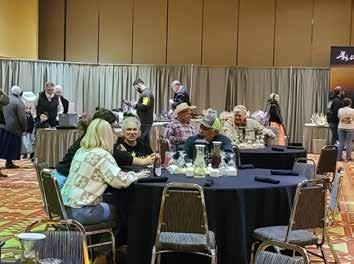
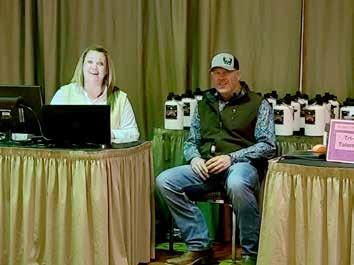




Autumn
Acorn
Apple Leaves
Colors
Pumpkin Sweater
Maize
Scarecrow
Turkey Antlers
Buck Harvest
Cider
Cranberry
Hayride
Sunshine Foliage
Hibernate
Migrate
Umbrella
Raincoat
Orchard
Frost Season
Answers to puzzles will be available in the next issue, or can be found on our website: www.deersites.com
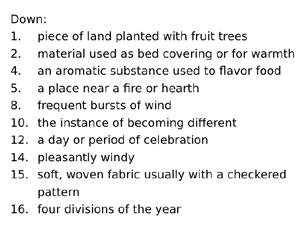



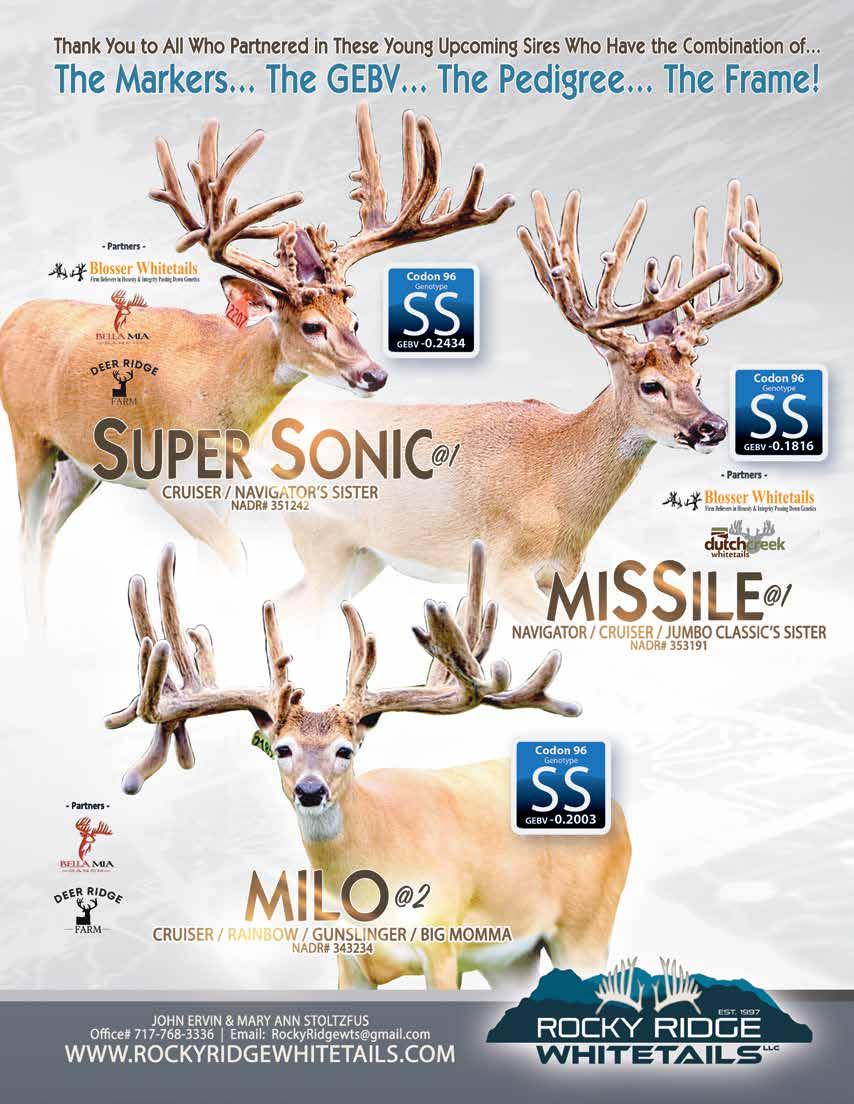


Ask Nikki Brooks of Valley Deer Farm in Williamsport, Pennsylvania what she would have done differently in starting a deer farm with fiancé Tucker Sellinger three years ago, and her answer is simple. “Start sooner.” Many different considerations come to the forefront when starting a deer farm. For example, knowing what type of deer potential end markets are seeking and what they are willing to pay for them, is something every fledgling deer farmer should research before starting a deer farm, offers Bruce Snyder of Snyder’s Whitetails in Selinsgrove, Pennsylvania. Although he has successfully operated his deer farm for more than 20 years, had he to do over Snyder would have initially visited more farms. “You need to visit with and know your buyers and establish a trusting relationship from the beginning,” he said. “In selling your deer the buyer needs to know that they are healthy. The day they’re leaving your farm, you need to take their temperature, because you don’t want to be out the money if something happens.”
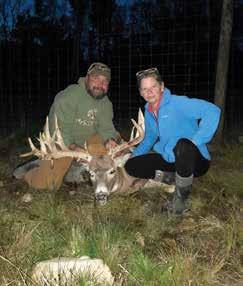
As important as trusting relationships are, is also the need to handle deer with ease and safety. “I would have
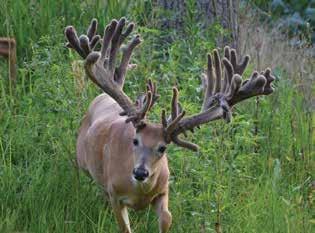
made having a proper handling facility NUMBER ONE from the start,” Snyder, 54, said. “When I first started, I was in my 30’s. I was young and stronger and now 20 years later things aren’t always so easy. Being able to handle them safely and without necessarily the need to dart makes life a whole lot better. I also wish I had learned to bottle feed in those early years to make it easier to get close to them.”
Helping Snyder today keep a closer handle on his deer, is his daily routine of feeding treats to his herd of 50 or so. “You need to keep eyes on your deer every day and be able to spot diseases and signs of poor health. And the sooner the better,” Snyder said. “They are good at hiding everything. If one of my deer doesn’t come up for a treat, then I know something is wrong.” Disease prevention can be key when the intention is to raise the healthiest deer possible and to this end, a nutrient rich feed and supplement program is key. Had he to do over, Snyder would have added kelp to his grain mill order from the very beginning. Kelp, added at 10 pounds per ton of feed, helps deters flies away from deer. He also learned to test his hay to make sure it’s never too high in nitrates, which can cause abortions.
The diligence and steadfast seven-day-a-week commitment to caring for deer is something Sellinger and Brooks realized the moment they decided to raise deer (in addition to working full-time jobs.) Although only in their third year of deer farming, both intend to ensure their farm becomes profitable. “We tried to do it right from
the very beginning. But looking back, we would have made our primary (2.5 acre) enclosure bigger and would have installed our utilities (water and electric) before we got our first deer,” Sellinger, 51, said. “Knowing now what we know, I also would have cleared more land off to make it easier putting fences up, too.”
And like Snyder, Sellinger wished he and Brooks had erected deer-friendly facilities from the very beginning. However, “the living room worked great,” Sellinger said, in reference to temporarily housing fawns. “The dining room worked great, too.” As he now works to ensure the health and longevity of the 23 deer residing on the farm, he and Brooks plan to upgrade their current bottle-feeding facility and perhaps also build a handling facility should time and finances allow. “From the beginning, we also really heeded the guidance of veteran deer farmers like Glen Erickson who generously offered help and advice on everything from breeding to nutrition,” Sellinger said. “Everyone is this industry is so willing to help. No one is competitive. We are all here to help each other succeed.”




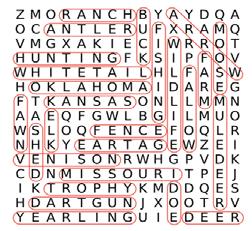






Our disposable RDDs are shorter in length and the lightest on the market thereby providing the ultimate accuracy while reducing the potential for problematic hematomas. Our Slo‑Inject® technology means that your medicine is delivered in the most effective manner possible. Pneu-Dart. When you can’t afford to miss.®



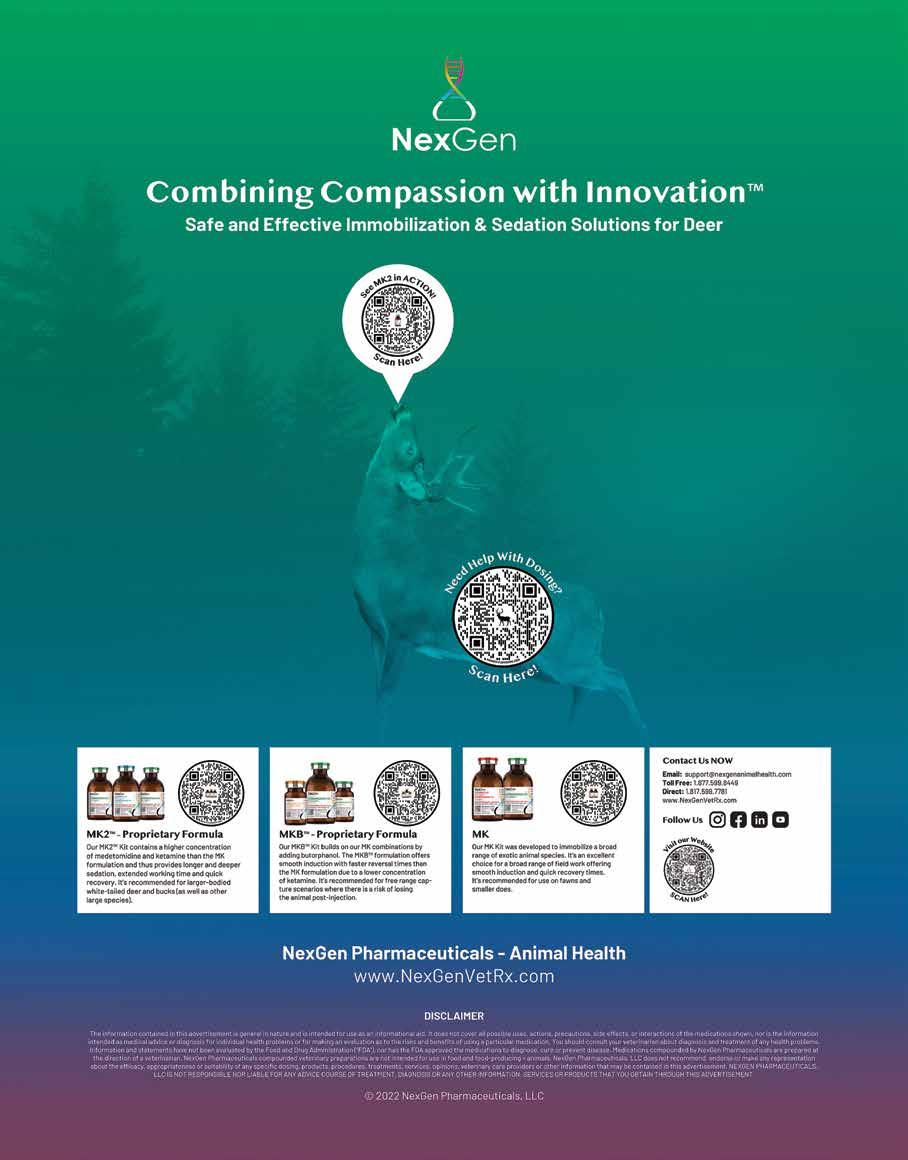








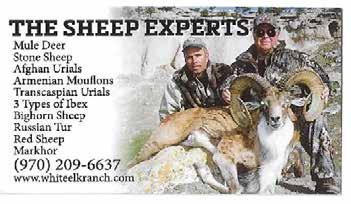

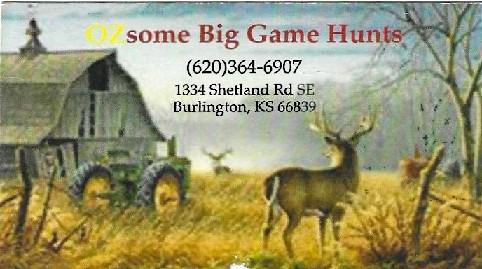





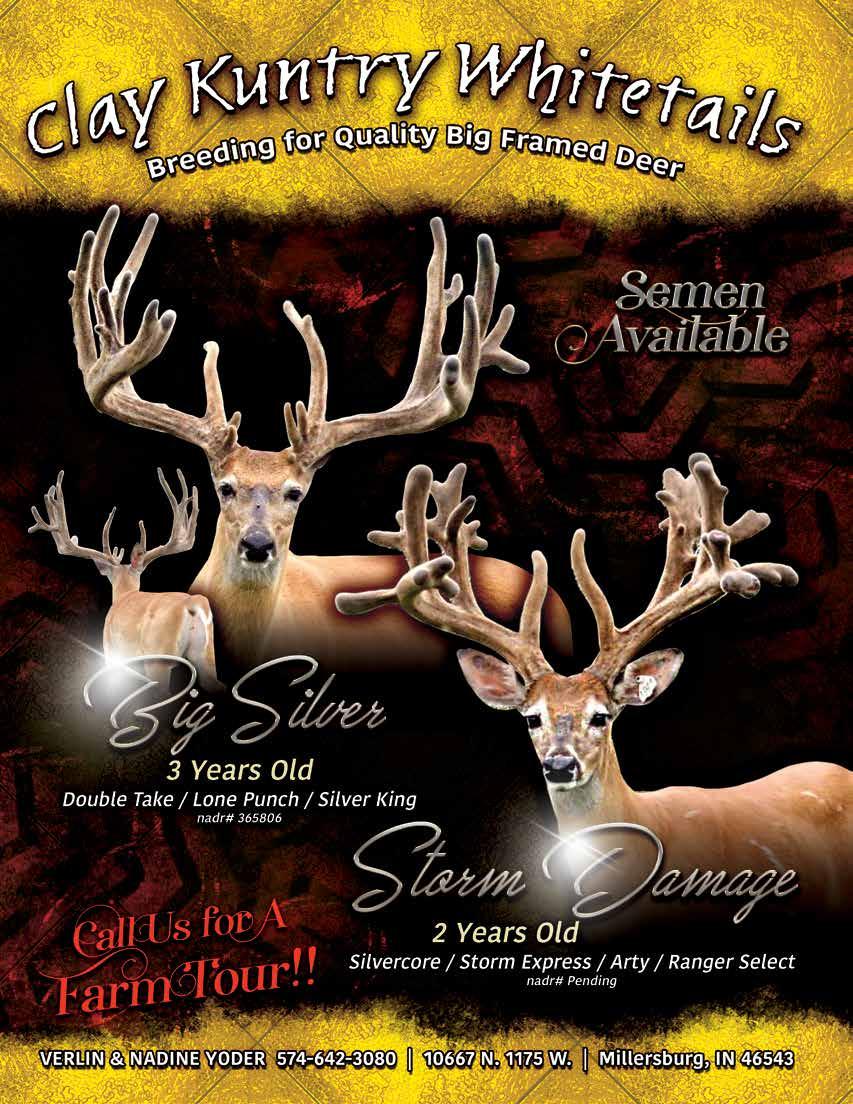



July 1, 2023 - June 30, 2024
Name:___________________________________________________________________
Ranch/ Farm Name:___________________________________________________________
Address: _________________________
City/State/Zip_________________________________________________________________
Phone:_______________________________________________________________________
Email:____________________________________________
Website:___________________________________________________________________
How many elk do you own?___________________________________________________
How many deer and what species?___________________________________
How many acres of high fence?______ Do you AI your elk or deer?________
Do you own a hunting preserve?______ If yes, how many animals harvested a year?_______
Do you sell elk and/or deer products at local farmers markets?________
Do you harvest velvet antler? ________
Are you enrolled in the voluntary CWD Monitoring Program?________
Circle membership type:
Voting member: $50 annually, full voting rights, must own elk or deer in Kansas
Associate member: $25 annually, nonvoting (not open to elk or deer owners in Kansas)
Dues payable to: Kansas Elk & Deer Association 825 S. Kansas Ave; Suite 500 Topeka, KS 66612

I give permission to have my contact information published in the annual directory and on the website Yes No
SINGLE Year Memberships: (Starts now and goes to end of 2023)
Large Breeder 2023 - $100 (Voting Rights)
Hunting Ranch 2023 - $100 (Voting Rights)
Affiliate Member 2023 - $50 (Supporter or Out of State Producer)
THREE Year Memberships: (Starts now and goes to end of 2025)
Large Breeder 2023-2025 - $300 (Voting Rights)
Hunting Ranch 2023-2025 - $300 (Voting Rights)
Affiliate Member 2023-2025 - $150 (Supporter or Out of State Producer)
PAYMENT METHOD- Check: (Make checks or money orders payable to:) Ck # Missouri Deer Association
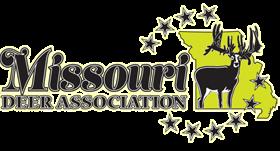
American Express Zip Code of CC Billing:
Date:
Mail To: Missouri Deer Association (C/O Amanda Peckinpaugh) PO Box 1141, Marion, IL 62959
You may also sign up online at: missourideerassociation.com







